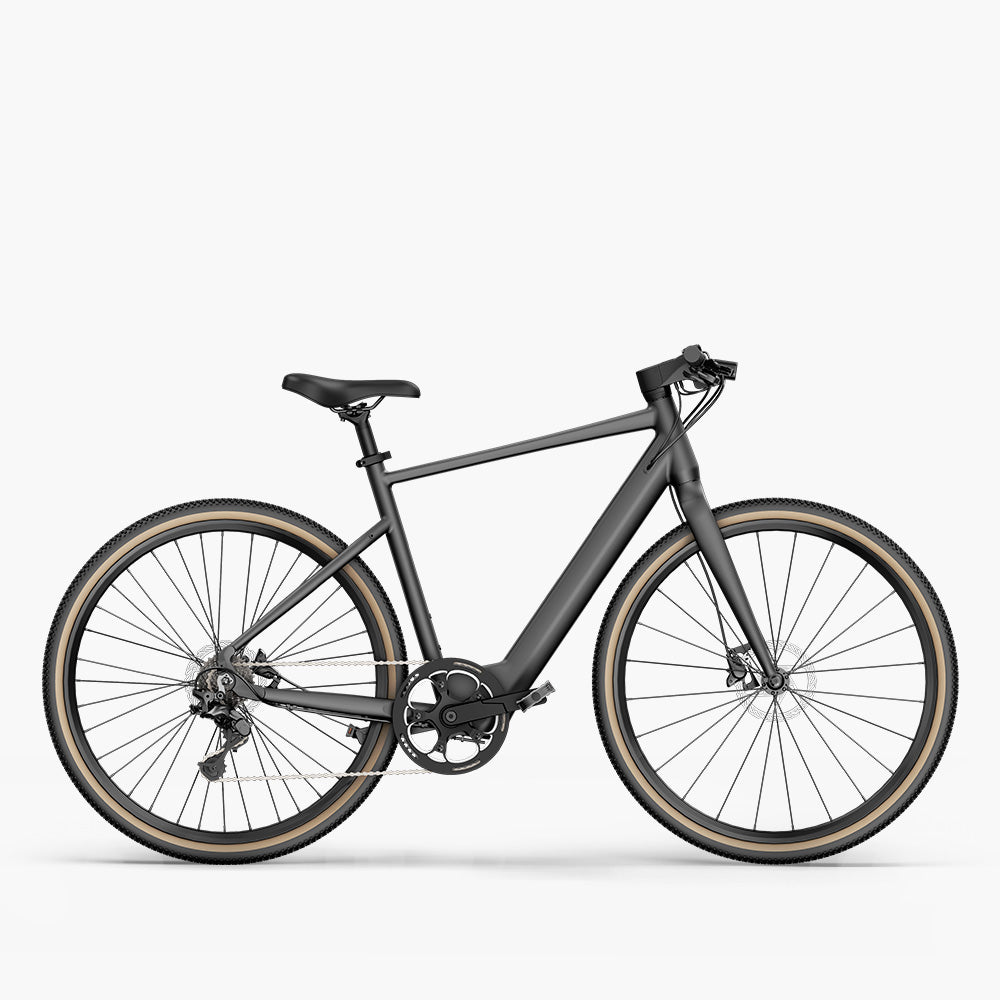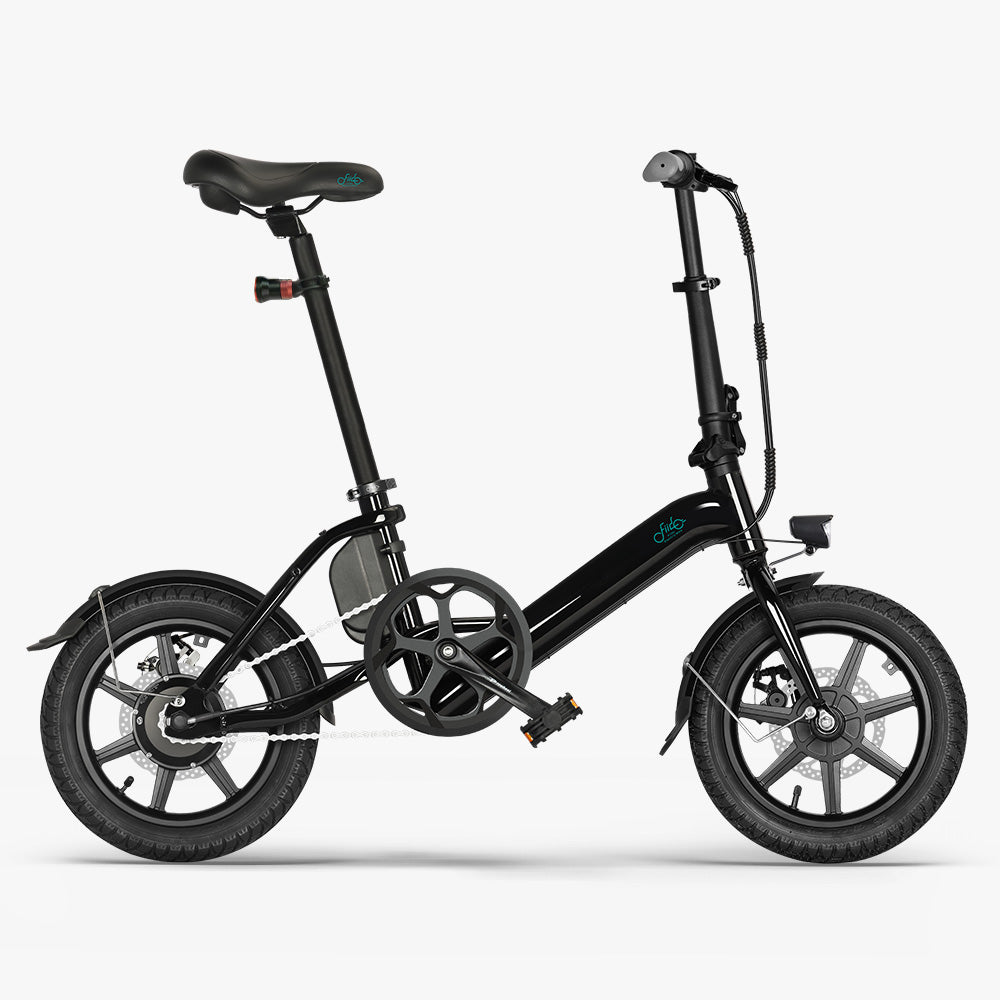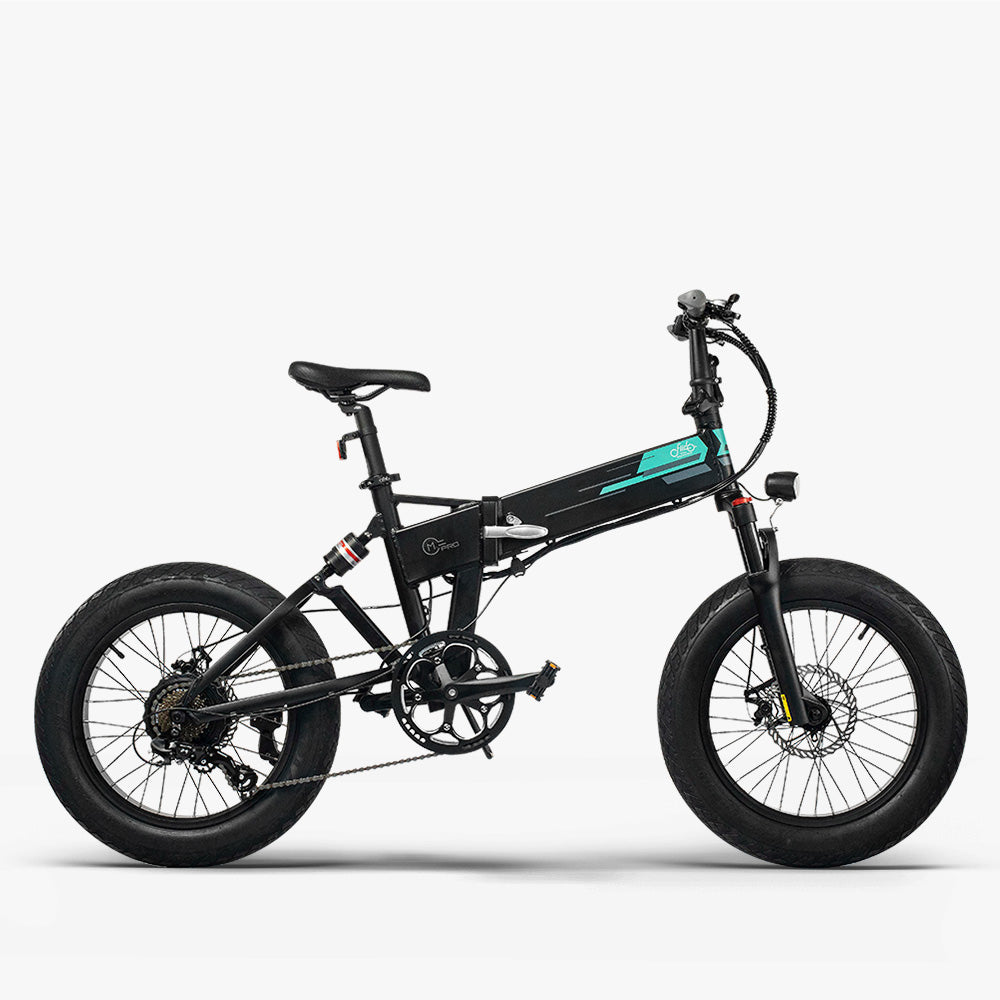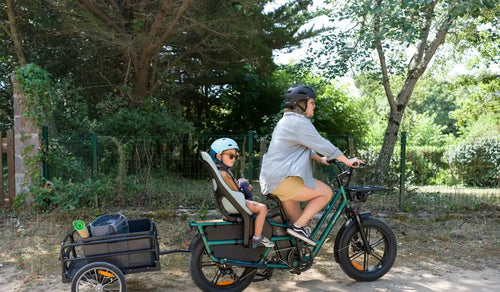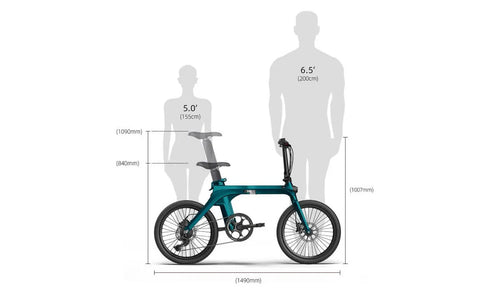
In this article, we will go into the details of each class to help you choose the right e-bike for you. You'll learn the differences and their implications, and we'll also give you some excellent examples of e-bikes in each class you may want to check out.
What Are E-Bike Classes?
E-bikes are classified based on their motor functions and speed capabilities. These classifications help regulate where and how they can be used. The idea is to reduce the number of accidents, keeping riders and members of the public safe. Here's a quick overview:
- Class 1 E-Bikes: Pedal-assist only, no throttle, with a top speed of 20 mph.
- Class 2 E-Bikes: Pedal-assist and throttle, with a top speed of 20 mph.
- Class 3 E-Bikes: Pedal-assist only, with a top speed of 28 mph.
Class 1 E-Bikes
Class 1 e-bikes are the most basic type you can buy. They are a great entry point for beginners and those on a budget. They have a motor that only engages when you pedal, known as pedal assist. These bikes don't have a throttle mode, so you can't just sit back and let the bike do all the work for you. The motor disengages once you hit the assisted top speed of 20 mph. You can still ride faster using your own peddling or rolling downhill.
Class 1 e-bikes are legal in most areas. There's a good chance you'll be able to ride on most bike paths, trails, and roads, making them the most universally accepted e-bike class. The disadvantage of these bikes is that 20 mph may seem slow for experienced riders and those who want to cover longer distances quickly. Also, they don't have a throttle, so you can't rest your legs while still moving.
Advantages of Class 1 E-Bikes
Tips For Class 1 Electric Bike Riders For Class 1 e-bike riders, there are several important tips to improve the riding experience. First, when you first start using it, you should choose a lower assist level to get used to the handling of the bike and gradually increase the power output. When taking a long ride or commuting, make sure the battery is fully charged and make a habit of charging it in time after each ride. Use the cadence assist properly, adjust the assist level according to different terrain, use a lower gear on flat roads, and increase the power when climbing hills to reduce physical exertion. Although Class 1 e-bikes can be used on most bike paths and roads, you still need to obey traffic rules, stay alert, and pay attention to your surroundings. Maintaining the proper tire pressure is also key to ensure a smooth ride, reduce wear and improve efficiency, which can also extend the battery life. When planning your route, since the speed limit of Class 1 e-bikes is 20 mph, try to choose roads that are suitable for riding and avoid high-speed traffic to ensure a safe and enjoyable ride. Finally, safety equipment is essential. Wear a helmet and wear bright or reflective clothing, especially when riding in the morning or evening, to improve visibility and ensure safety.
Class 2 E-Bikes
Class 2 e-bikes are more versatile. Just like class 1 e-bikes, the motor assists your peddling, but you also have the addition of a throttle. The throttle operates via a thumb trigger, button, or by twisting the handlebar grip. It allows you to ride without peddling at all, although you still cannot ride faster than 20 mph when using the motor. These bikes are popular for commuting and running errands because you can switch between peddling and using the throttle as needed.
The throttle makes riding uphill and starting from stationary effortless. They are also widely accepted, like Class 1 e-bikes, but you may find they are restricted on some paths.
If you use the throttle extensively, you'll notice that your battery will drain much more quickly, reducing the range. So, it's best to combine using the throttle with pedaling.
Class 3 E-Bikes
Class 3 e-bikes are the fastest, with an assisted top speed of 28 mph. They are best for people who want to cover more ground quickly, making them popular with serious commuters and people who want a more intense ride. They have more powerful motors, which help you keep up with and pass traffic. Most do not have throttle mode, but a few are equipped with throttle, and due to their higher speeds are not allowed everywhere.
Some states require you to have a driver's license to ride a Class 3 e-bike. Additionally, some have age restrictions even if a license isn't required. You may find that you need to be at least 16 years old to ride a Class 3 e-bike in your area.
Benefits of Class 3 E-Bikes
Tips For Class 3 Electric Bike Riders
Clothing to enhance visibility. Be aware of local laws, as some areas may restrict where Class 3 e-bikes are allowed, such as bike paths or certain trails. Given the faster speeds, make sure your brakes are well-maintained, checking brake pads and cables regularly. Efficient use of pedal assist is key; lower levels can help conserve battery life on flat terrain, while higher levels provide more power for hills or longer rides. When planning your routes, choose areas with less traffic and wide lanes to fully enjoy the bike’s speed while staying safe. Keep a close eye on your battery level, as higher speeds consume more power. On longer trips, it’s helpful to carry a charger or plan for charging stops. Lastly, ride defensively, staying mindful of other road users like cars and pedestrians. Always signal your intentions, use mirrors if available, and maintain a safe distance from vehicles.
Examples Of Fiido E-bikes In Each Class
Class 1 - Fiido C21
A great example of a Class 1 e-bike is the Fiido C21. This is a great electric bike with some excellent features that make it ideal for city commuting. For instance, its aluminum alloy frame is lightweight and foldable, so it is incredibly portable and easy to store. The C21's 250W motor is powered by a 208.8Wh battery, which gives you an approximate range of 100km (62 miles), which is often more than enough for most people's daily commutes.
- Motor - 250W
- Battery - 208.8Wh
- Range - 100km(62miles)
- Max Speed - 24 kph (15 mph)
Fiido E-Gravel C21 Electric Bike
Urban communter electric bike with torque sensor, only 38.58 lbs.
Class 2 - Fiido D3 Pro
The Fiido D3 Pro is a popular Class 2 e-bike that fits a lot of cool stuff into a small package. Along with its throttle mode, owners love its user-friendliness from its foldable step-through frame. Its small wheels help with its compactness and make it incredibly agile, ideal for weaving through city streets. The Fiido D3 takes you up to 79 km (49 miles) in pedal-assist mode or 25km (15.5 miles) on the throttle for effortless journeys. It even has hydraulic disc brakes, which are rare on an electric bike of this type and price.
- Motor - 250W
- Battery - DMEGC 280.8Wh
- Range - 80km(49.7miles)
- Max Speed - 25km/h (15.5 mph)
Fiido D3 Pro Mini Electric Bike
The most affordable and adorable electric bike.
Class 3 - Fiido M1 Pro
If you're looking for a Class 3 e-bikes, you may want to check out the Fiido M1 Pro. The first thing you notice about this e-bike is its fat tires. These improve ride quality by soaking up bumps and vibrations from the surface you're riding on. Additionally, the M1 Pro's fat tires give you lots of grip so you can confidently ride rougher terrain. This e-bike has a punchy 500W motor and a 7-speed drivetrain, allowing you to scramble up steep slopes and ride fast whenever you feel like it. Even though the M1 Pro is a rugged e-bike, it is highly versatile. Its foldable frame makes it easy to transport to the trails for a great day of riding. You also get nearly 90km (56 miles) of range using the pedal assist and 58km (36 miles) when using the throttle alone.
- Motor - 500W
- Battery - DMEGC 614.4Wh
- Range - 90km (56 miles)
- Max Speed - 45km/h (28 mph)
Fiido M1 Pro Fat Tire Electric Bike
The most cost-effective fat tire electric bike off road.
Legal Considerations: Where Can You Ride?
The most important thing about choosing an e-bike in one of these classes is understanding where you are allowed to ride it. Laws and regulations vary by state and even by city, so you need to check which classes are permitted in your area.
You'll probably find that class 1 and class 2 e-bikes are allowed on most bike paths, trails, and roads, but some places may restrict class 2 e-bikes due to the throttle mode. Class 3 e-bikes are often restricted to roads and bike lanes. This means you cannot legally ride a class 3 e-bike on all paths and mountain bike trails.
It's important to understand the legal aspects of e-bike ownership, including licensing and insurance. Most people won't need a license or insurance, especially for class 1 and 2 e-bikes. Still, it's best to be aware of local regulations and consider the benefits of insuring your e-bike for peace of mind.

Which E-Bike Class Is Right for You?
Let's assume you live somewhere where you can ride any e-bike class. But you still need to decide which class is best for you.
If you are a beginner or a nervous rider, stick with a Class 1 e-bike. This type is the most straightforward to use, has the lowest power, and is the most accepted. Therefore, you will have a hassle-free riding experience with a Class 1 e-bike.
Riders who want flexibility should consider a Class 2 ebike. This is because these bikes have a throttle mode, making travel effortless if you want it to be. These bikes are also popular with people with mobility issues and those recovering from injury. They can use their e-bike to help with rehabilitation by exercising but then ride with the throttle if they feel like they've done too much or need to rest.
A Class 3 e-bike is the best choice if you're a serious commuter or fitness enthusiast. The extra speed makes riding more fun and allows you to get to your destination much quicker.
Conclusion
E-bikes come under three classes that are in place to regulate their usage and to meet different needs. Class 1 e-bikes offer a great introduction to electric biking, Class 2 bikes add versatility with throttle control, and Class 3 bikes deliver top-notch speed for those who need it.
When choosing an e-bike class, consider your lifestyle, where you plan to ride, and your budget. No matter which one you choose, you're investing in a convenient, eco-friendly way to get around. Check out the options on Fiido.com to find your perfect e-bike.










